pharmvet
Platinum Member
- Joined
- Sep 28, 2008
- Messages
- 533
- Location
- North East TX
- Tractor
- Ford 7710 II FWA, NH TB110 FWA w/ NH 46LB loader, JD 5303 2wd w/ loader
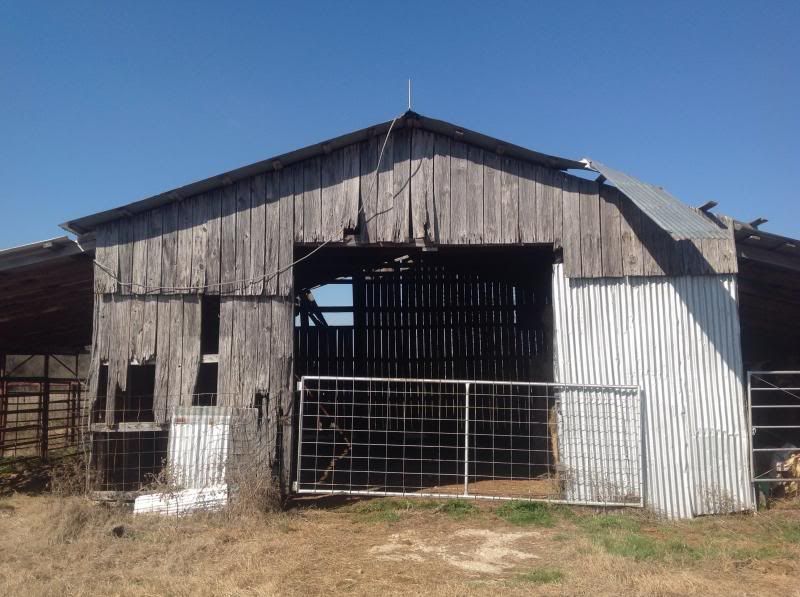
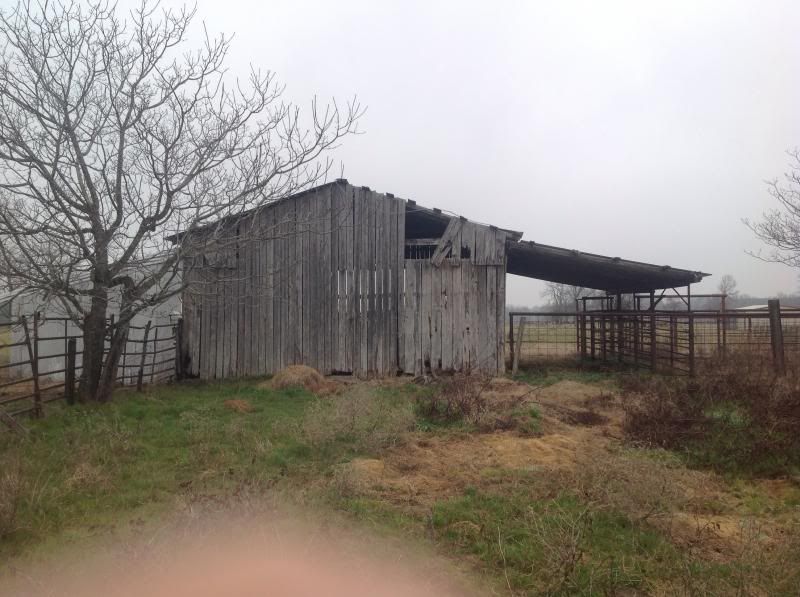
As was, and still is the case with kids across the rural United States, there was a BARN in my childhood. It is this very unassuming structure, a staple of farm life across middle America, around which these rambling thoughts revolve. Unbeknownst to me or anyone else, this barn would have a large role in molding me into the person I am today.
Built some time around 1970 (the year I was born) by the farm's previous owners, and located approximately 100 yds south east of the house, the barn initially consisted of a stand alone rectangular structure with its opening facing due east. Although it was only 30 ft long, 26ft wide and stood 20 ft at the roof peak, it seemed throughout my youth to rival the Roman Colosseum in size. It was constructed in typical pole barn fashion, with dark black 12" diameter creosote poles at each corner and smaller 8" diameter poles spaced 6 ft apart along each side wall, as well as the front and rear. Four rows of full dimension 2x4s were notched into the poles horizontally and attached using long steel nails with a hatched head pattern and prominent spiral grooves along the entirety of the shank. These heavy boards composed the general skeleton onto which the exterior walls were nailed. Rough-cut 1x8 and 1x10 oak planks oriented vertically composed these 4 walls. I suspect that initially the planks were fitted tightly alongside one another to keep out the rain, but most certainly succumbed to the inevitable shrinkage common to all "green" lumber. I say this because there have been 1/2 inch gaps between the planks as far back as I can remember. Its roof was constructed of the heavy corrugated ( currently unavailable) sheet iron of yesteryear. Even today, I regularly hear farmers and ranchers complaining about the shortcomings of modern tin. That sheet iron was attached to oak lathing with lead headed nails, many of which I later pulled off to use as sling shot ammunition, or simply to roll down a groove in the roof's corrugations. Sitting defiantly atop the roof peak were 3 aluminum lightning rods, each connected via a cable of braided aluminum which ran east along the ridge cap, down the east eve southward, and ultimately to a copper rod driven deep into the ground alongside the barn's southeast corner.
After purchasing the farm in 1973, Daddy added north and south wings to the barn, nearly doubling its capacity. The rafters used in the construction of the north lean-to addition were long, thin persimmon trees. Cedar trees were used on the south addition. When asked years later why he used persimmon trees for rafters, Daddy replied "Because when I built those add-ons I didn't have enough money to buy a hamburger when I wanted one!" On top of the persimmon and cedar rafters, old 1x8 boards were used as lathing. They were undoubtably recycled from a previous structure, because I can remember that some of them were coated with a layer of cracking white paint, and some were tongue and groove. I suspect that the persimmon rafters started out straight, but ever since I can remember, they sagged prominently under the weight of the lathing and sheet iron. The North wing was enclosed to the north and west, and used as storage for feed, wire, T-posts, and what few tools daddy owned. The south wing was left open, and generally reserved for a well used tractor, whose exact make and model changed several times throughout my childhood and young adult life. It was here I learned that a small puff of ether could be sprayed into the air intake of an unwilling tractor to help prompt its cranking. It was here that I learned how to use a set of jumper cables to jump start a cold or dying battery, and to use a farm jack and lug wrench to remove a flat tractor tire.
To the west and south of the barn was a one acre catch pen composed of cross ties, barbed wire and 16ft cattle panels. Most of the time it was filled with blackberry vines and dogfennel. It was here that I learned to dig post holes, stretch wire, and drive staples. Three cross fences were ultimately constructed, each leading into this catch lot, or trap, as it was often called. Three well worn, slightly bent, and even more slightly rusted gates were used at the entry of each pasture into the barn lot. Each was hung from a cross tie by screw-in hinges placed there through the utilization of a manual brace and bit and red pipe wrench. None of the gates swung properly. Opening them required that a person pick up on the free end with one arm, lean the opposite direction with the other arm extended downward at a 45 degree angle to maintain balance, walk the arc created when one end of any straight line pivots from a fixed point, all the while managing to protect ones feet and shins from the bottom corner of the swinging gate. The two previously mentioned tools, coupled with a hammer and hack saw, composed the sum of daddy's tool arsenal. The cross ties serving as the trap's gate posts contained a small treasure trove of large nails with dates stamped into their heads. Although they have long been lost, I at one time had a small collection of them bearing dates ranging from 1933 to 1941. Ultimately, a modest set of steel working pens was constructed immediately adjacent to the open air South lean-to. One of the posts in the load out chute was made intentionally long to help support the sagging rafters. It was in this small set of working pens that I learned to catch and flank bull calves for castration and to press heifers against the fence for vaccinating and ear notching. It was here that I learned to catch and saddle a horse, to help an unwilling calf nurse, and to always close and latch gates behind me. It was here that I learned to back a truck and trailer, and which side of the pole to be on when pushing it behind an agitated cow to prevent her from backing up in the chute. It was here that I raised 7 Holsteins from bottle calves to bred heifers for a Greenhand Ag project.
Countless hours of my childhood were spent in, around, and on top of this barn. From my earliest memories, the barn served as the hub of my outside activities. It was the inevitable destination of my 10 year old self, pellet rifle in hand, in search of a yellow breasted field lark or cotton tail rabbit to slay. It served as the queening location for several pet cats over the years, as well as the batchelor pad of several ferrel toms responsible for those litters. It was where our dog always found refuge when December and January brought snow and ice on the heels of sub-freezing temperatures. Every summer the barn was stuffed to the rafters with fresh, pungent, pea green square bales of hay. It was within this massive hay stack that I, with the aid of a single friend, or possibly a small group in the case of a sleep over or birthday party, would construct intricate labyrinths of tunnels and chambers in which to play army or cowboys and Indians. The barn still serves as the final resting place for a very well liked pocket knife lost sometime around 1979 , after it fell out of a homemade sheath fashioned from a self tanned fox squirrel hide, during one such tunnel construction. It was here that I learned to stack hay into the barn and into the bed of an old Chevrolet feed truck. It was here that I learned to properly and safely use a pocket knife to cut the hay strings I watched transition from grass to plastic over 2 decades. In the mid 1980s, square hay was phased out in favor of less laborious round bales. Daddy always kept a reserve of square hay, but much of the farm's grass was rolled into 6' round bales and stacked (you guessed it) just behind the barn. No farm kid can resist the thrill of jumping from bale to bale, and I was certainly no exception. The barn was where I learned to differentiate between dirt dobbers and their more serious cousins-yellow jackets and red wasps. It was also where I gained first hand knowledge in the subtle variation of pain inflicted by the sting of each! Every spring, wood boring bees would set up residence in the cedar rafters of the south wing, each establishing a small territory approx 10 ft in diameter. To a 12 yr old boy with a thin flat wood plank, hovering wood bees make for wonderful batting practice. From the rafters hung a heavy cotton rope strategically placed so that an accomplished vinesman could emulate the latest Saturday morning episode of Tarzan, swinging effortlessly from one side of the barn to the other.
Early on I discovered that the barn's roof offered the best vantage point on the entire farm. From its crest I could survey not only our property, but that of our 4 closest neighbors. I spent many late summer evenings lying silently on the the roof watching daddy's small herd of 25 cows meander slowly from the day's last drink at the pool to the west pasture. Their repeated travel along the same route resulted in a series of deep trails cut into the Bermuda grass pasture. In certain areas, these trails would split and run generally parallel to one another, but always they would reconverge, eventually channeling through the gap connecting the east and west pastures. I gained access to the barn's roof by climbing the fence next to it which happened to possess the tallest cross tie on the farm. From the top of this post, the barns roof edge was a mere 2 ft. Once when using this post to climb onto the barn, I found the large two blade Old Timer folding knife we used for castrating, which had been lost months prior during spring calf working. I can well remember the vindication I felt when I carried the knife , with its rusty blades and sun bleached horn handle, into the house to show Daddy that it had not been lost, but only misplaced. Better yet, that it had been he, rather than me, responsible for misplacing it, as he had set it atop the post while we flanked and wrestled with the calves. Atop the barn was also the preferred location to sit with a best friend and sing along with Marty Robbins to his album "Gunfighter Ballads and Trail Songs" . I remember vividly the distinctive sounds made by The STOP, REVERSE, FF, and PLAY buttons as "Big Iron" was repeatedly selected, and to this day I can recite this and every other of his songs verbatim. Because there is no level surface on a gable roof, the small rectangular cassette tape player had to be hung on one of the lightening rods by its flexible plastic handle.
The shade created by the barn could always be counted upon to produce an abundant crop of Poke Salad. My great grandfather and mother fancied the young,tender, spring time chutes for table fare. To me, Poke Salad meant something entirely different. The dark purple berries produced late in the summer were a staple ingredient to my Indian war paint. Two slashes under the eyes with my index and middle fingers and one vertically down chin center was my trademark. No living creature was safe when, with bow and arrow in hand, I went on the warpath. As a young child, the long, hot, days of summer break seemed to last forever. I spent many of these days wandering the farm in a state of carefree, ultra-relaxed, semi-boredom, a surreal mindset I have long since lost as an adult , and have never been able to recapture. Often times, during one such delicious trance, I would use my BB gun to send its small round projectile on a rainbow path toward the barn a hundred or more yards in the distance . If my brain correctly calculated the azimuth, a distinctive "twank" could be heard seconds later. For some incredibly strange reason that I can in no words describe, the sound of the BB contacting the barn signified to me that all was well with the world.
The barn was almost lost one August afternoon when , while home alone burning trash in a barrel, I carelessly let the golden, dry pasture catch fire. What began as a tiny flame rapidly grew in size, fanned by the hot, dry summer wind. I watch helplessly as the flames licked across the pasture. Luckily, two uncles happened by at a time predetermined by God, and put out the flames with wet tow sacks only feet away from my beloved barn.
This barn that once stood proud and strong has fallen into general disrepair over the past decade, due in part to my father's failing health, nonuse, and time constraints. The persistent wind has loosened several pieces of the roof's tin, and constant exposure to sun and rain has finally broken the will of the exposed lumber. This past week, I set in motion a restoration project so they the barn might have a chance to give my children even a small portion of what it has given me. If I allow myself the luxury of being honest, I must admit that this restoration project is as much FOR me as it is for the barn that built me!
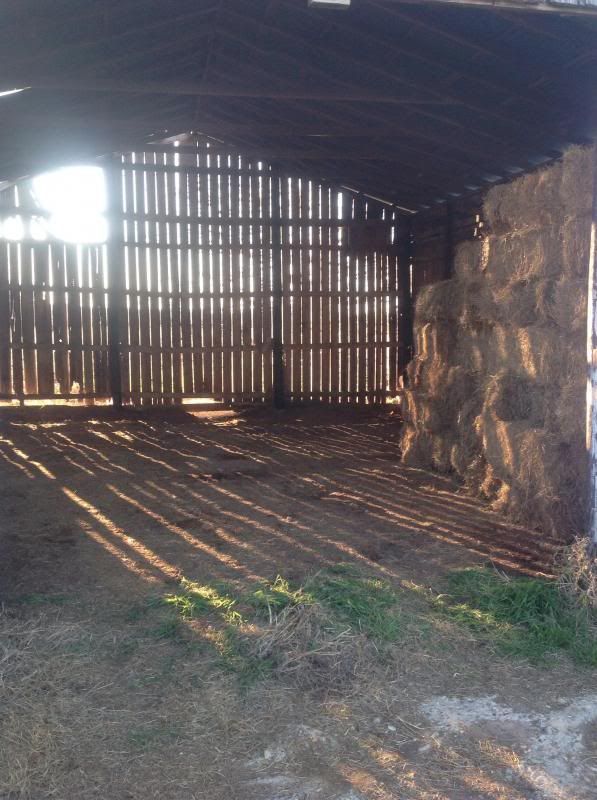
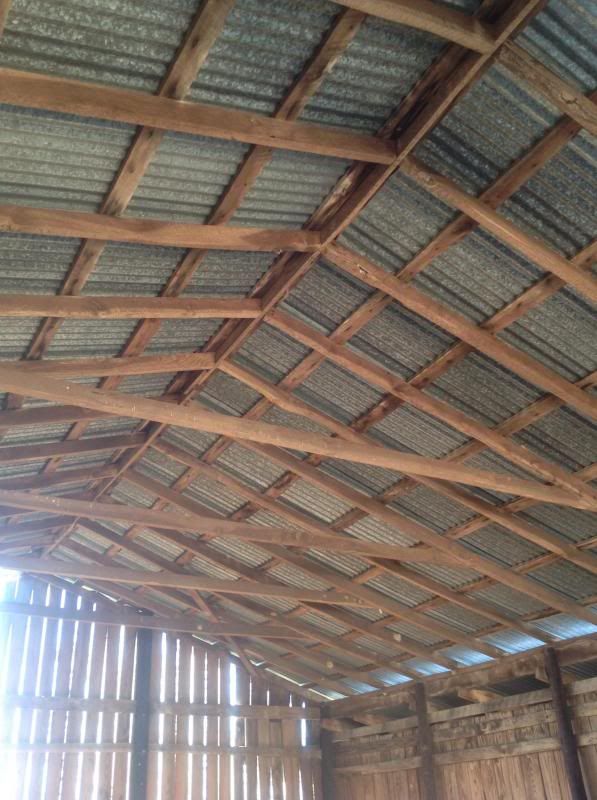
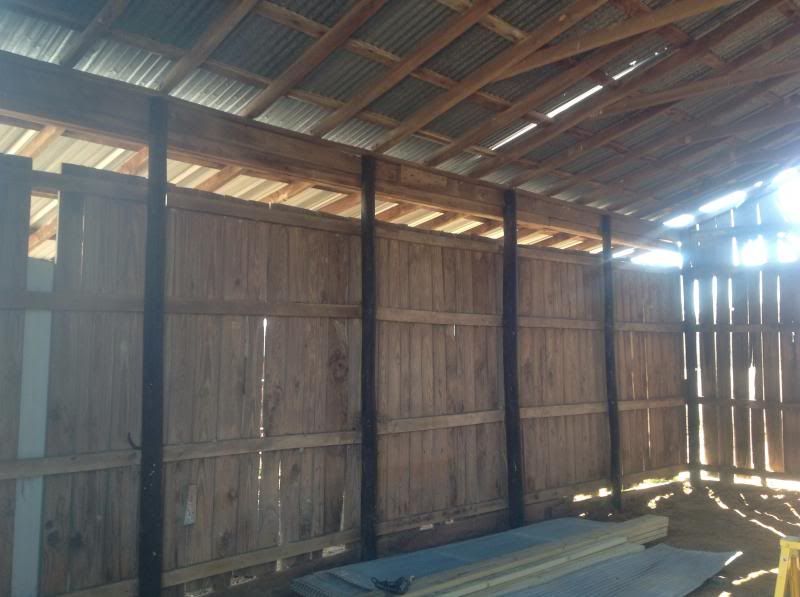
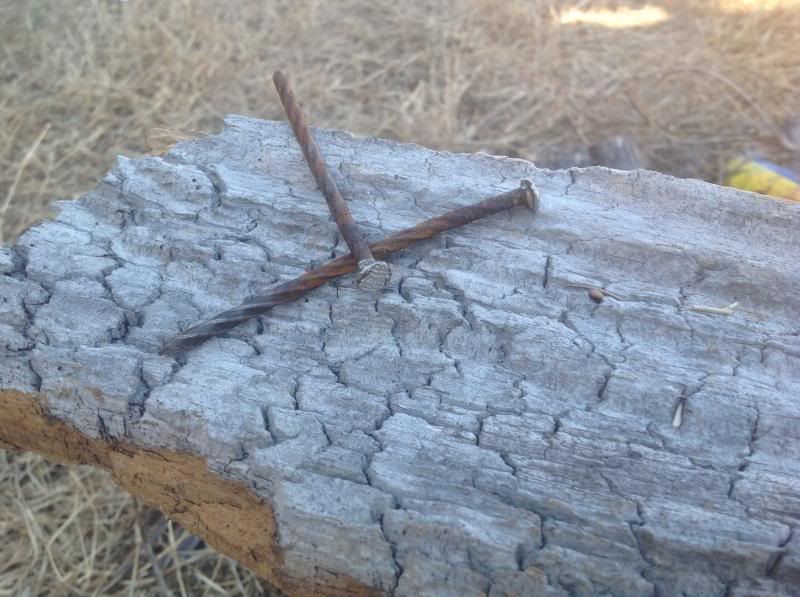
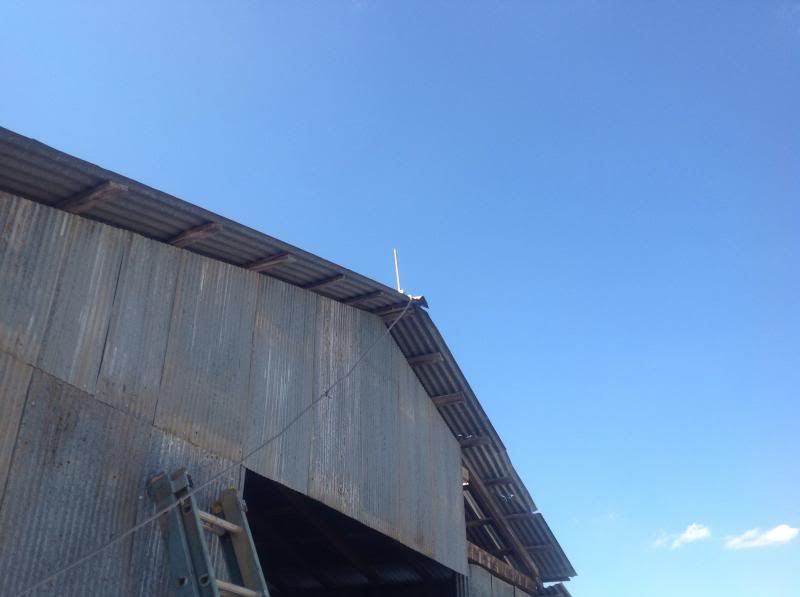
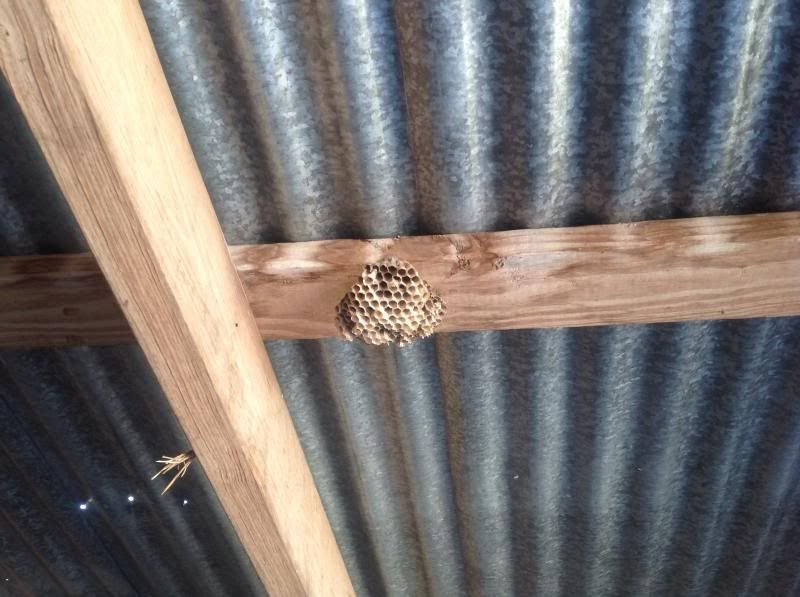
Last edited:
